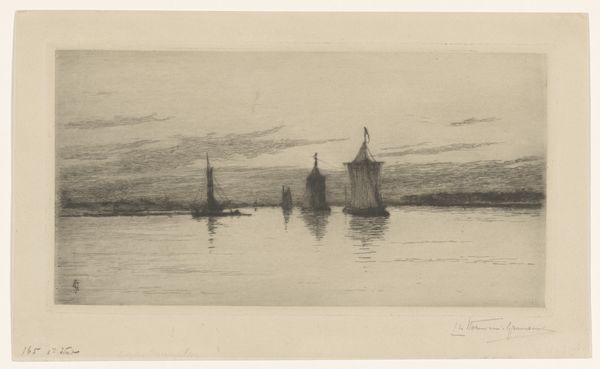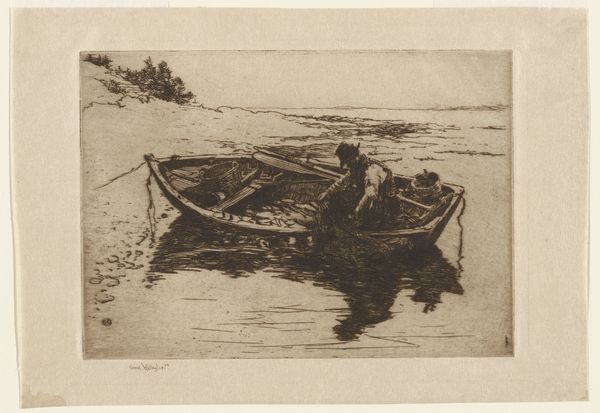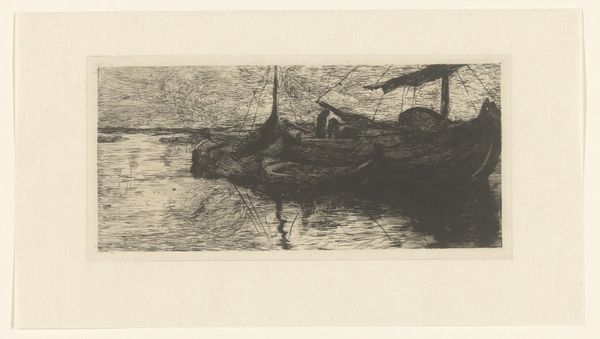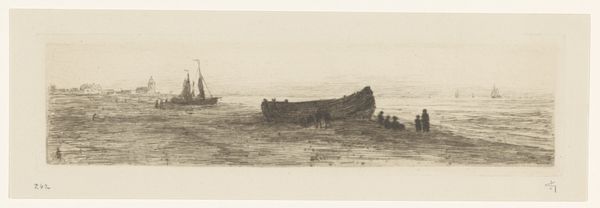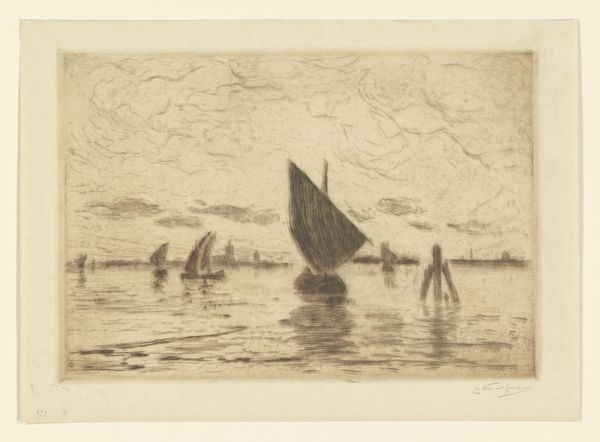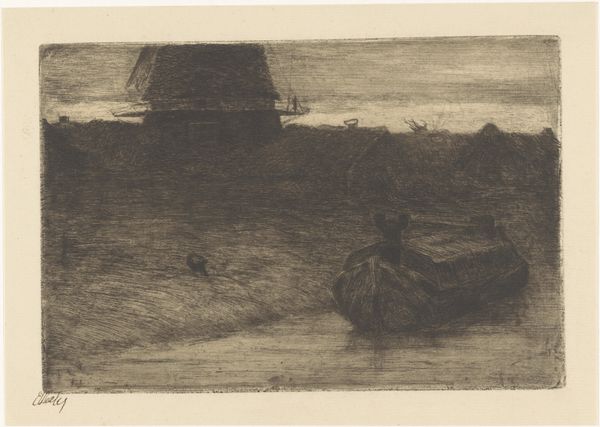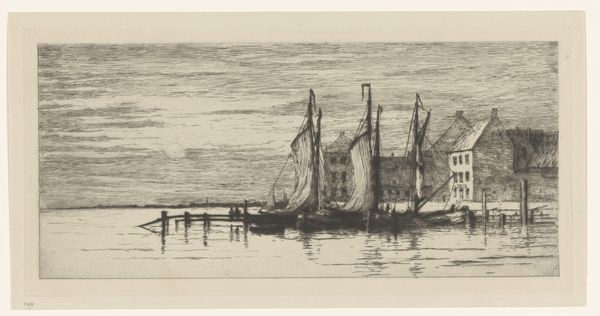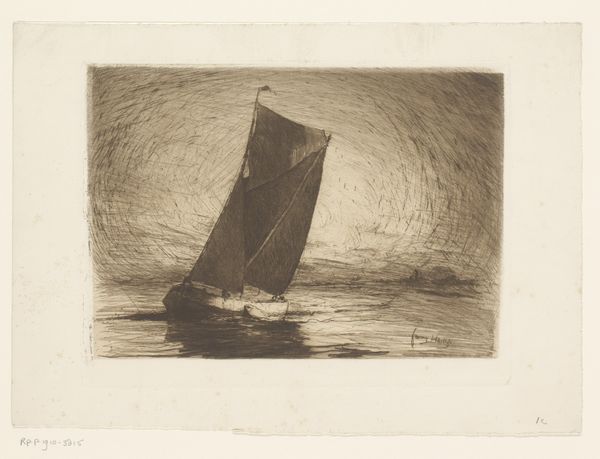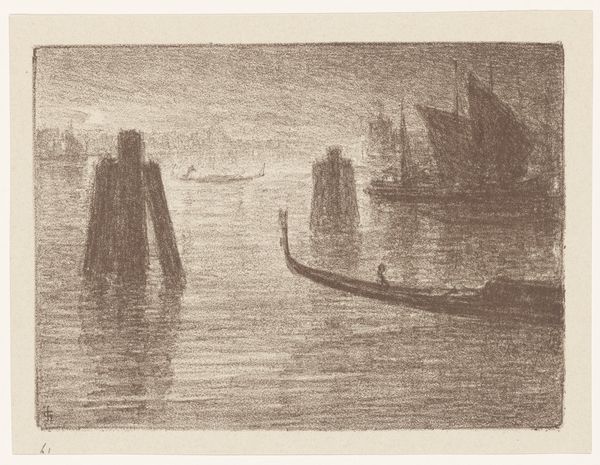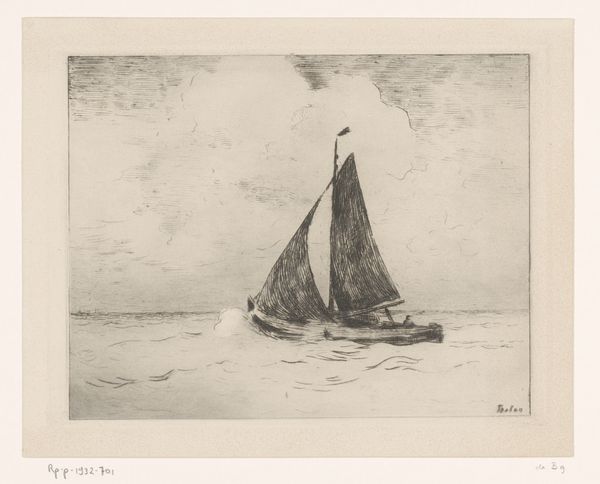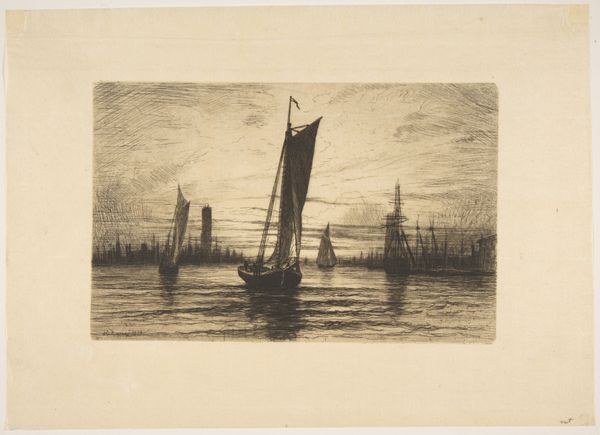
Dimensions: height 173 mm, width 355 mm
Copyright: Rijks Museum: Open Domain
Editor: Here we have "Wrakken van boten in de Biesbosch," or "Wrecks of boats in the Biesbosch," an etching and print by Carel Nicolaas Storm van 's-Gravesande from 1880. It’s currently held at the Rijksmuseum. There's something quite haunting about the tonal gradations and decaying forms depicted here. What elements of its formal structure stand out to you? Curator: The most striking element is the sophisticated use of line. Observe how the artist employs hatching and cross-hatching to build up tonal values, thereby creating a sense of depth and atmosphere. Note also the strategic placement of the horizon line, which bisects the composition, thereby emphasizing the flatness of the plane while simultaneously suggesting infinite space. Do you see how the artist uses varying densities of lines to suggest recession? Editor: I do. The lines are denser in the foreground boat wreck, which creates contrast and brings it forward. Are there particular qualities about the line and form that exemplify Romanticism? Curator: Indeed. The use of line in this etching evokes a sense of the sublime – the awesome power of nature and the fragility of human endeavors. The ruined boats can be interpreted as a symbolic representation of human mortality, contrasted with the timelessness of the natural world. How do you view the balance between decay and pictorial beauty here? Editor: I appreciate the way Storm van 's-Gravesande has harmonized light, form, and texture to convey a somber narrative, allowing viewers to reflect on the themes of decay and the passage of time. It emphasizes how critical elements such as light and lines contribute to an artwork's core meaning and evocative character. Curator: Precisely. By analyzing its intrinsic visual elements, we gain a more nuanced understanding of its emotional and aesthetic impact.
Comments
No comments
Be the first to comment and join the conversation on the ultimate creative platform.

